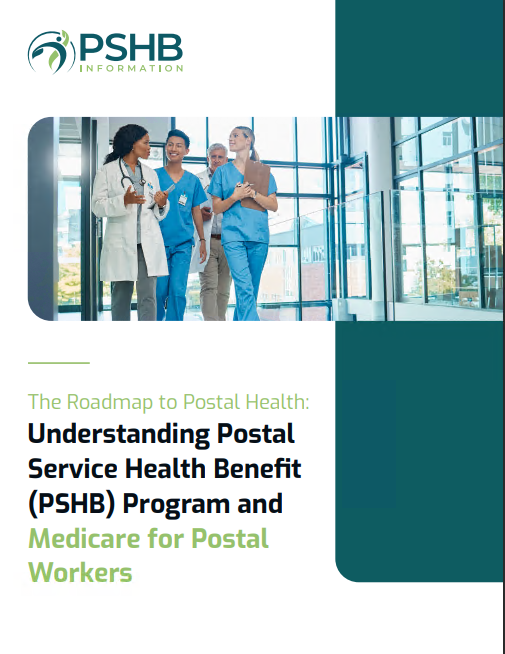Key Takeaways
- The Postal Service Health Benefits (PSHB) program, launching in January 2025, is set to overhaul health benefits for USPS workers, promising more tailored coverage options.
- USPS workers must stay informed about the PSHB transition to ensure they choose the best coverage for their needs by the 2024 Open Season.
PSHB and the Future of Health Benefits for USPS Workers: What to Expect
The United States Postal Service (USPS) has been a cornerstone of American society, providing essential services for over two centuries. However, the future of USPS workers’ health benefits is undergoing significant changes. With the introduction of the Postal Service Health Benefits (PSHB) program, set to take effect in January 2025, a new era of health benefits is on the horizon for postal employees. This article explores what USPS workers can expect from the PSHB program and how it will impact their health coverage moving forward.
The Shift to the Postal Service Health Benefits Program
The PSHB program represents a major shift in how USPS workers will receive health benefits. Under the Postal Service Reform Act (PSRA) of 2022, the PSHB will replace the Federal Employees Health Benefits (FEHB) program for USPS employees and retirees. This transition marks a significant change in the structure and delivery of health benefits, with the aim of providing more tailored and sustainable options for postal workers.
What Does PSHB Mean for USPS Workers?
The PSHB program is designed specifically for USPS employees, allowing for health plans that better align with the unique needs of postal workers. This shift is expected to bring several benefits:
- Tailored Health Coverage: The PSHB program will offer plans that are more closely aligned with the work environment and health risks faced by USPS employees, potentially leading to better coverage options.
- Sustainability: By separating USPS workers from the broader federal employee pool, the PSHB program aims to stabilize and sustain health benefits funding, potentially lowering costs in the long run.
Important Dates: Key Milestones in the Transition
The transition to the PSHB program will take place over several key milestones. USPS workers need to be aware of these dates to ensure they make informed decisions about their health coverage.
- 2024 Open Season: During the 2024 Open Season, USPS employees will be able to choose their health plans under the new PSHB program. This will be a critical period for workers to review their options and select the plan that best meets their needs.
- January 2025: The PSHB program officially launches, and all USPS employees and retirees will be transitioned to their new health plans.
How Will PSHB Affect Retirees?
One of the most significant aspects of the PSHB program is its impact on retirees. Under the new system, USPS retirees will be required to enroll in Medicare Part B once they become eligible. This is a departure from the current system under FEHB, where enrolling in Medicare Part B is optional.
Medicare Part B Enrollment: What Retirees Need to Know
Starting in 2025, all USPS retirees who are eligible for Medicare must enroll in Medicare Part B as a condition for retaining their PSHB coverage. This change aims to reduce the financial burden on the PSHB program by shifting some costs to Medicare.
- Cost Implications: While enrolling in Medicare Part B may mean additional costs for retirees, such as premiums, it also ensures comprehensive coverage when combined with a PSHB plan.
- Coverage Coordination: With Medicare Part B, PSHB plans will act as secondary coverage, potentially reducing out-of-pocket costs for retirees.
The Impact on Current and Future Retirees
The requirement to enroll in Medicare Part B may come as a surprise to some current retirees who opted out of Medicare Part B under the FEHB program. However, the transition offers an opportunity to reassess coverage needs and potentially benefit from the combined coverage of Medicare and PSHB.
For future retirees, planning for this change is crucial. Understanding how Medicare and PSHB will work together can help ensure a smooth transition and avoid any gaps in coverage.
What USPS Employees Need to Do During the 2024 Open Season
The 2024 Open Season will be a pivotal time for USPS workers as they transition to the PSHB program. Here are some essential steps employees should take during this period:
Review Your Current Coverage
USPS employees should start by reviewing their current health coverage under the FEHB program. Understanding what is working well and what could be improved will help guide decisions when selecting a PSHB plan.
- Assess Coverage Needs: Consider any changes in health status, family needs, or financial situation that may affect your choice of plan.
- Compare Plans: The PSHB program will offer a variety of plans, so it’s important to compare options carefully. Look at factors such as premiums, deductibles, coverage limits, and provider networks.
Attend Information Sessions
USPS is expected to provide information sessions and resources to help employees understand the new PSHB program. Attending these sessions will be crucial for making informed decisions.
- Get the Facts: These sessions will provide detailed information about the PSHB plans available, enrollment procedures, and key dates.
- Ask Questions: Don’t hesitate to ask questions during these sessions to clarify any uncertainties about the new health benefits program.
Make Your Selection Early
Given the importance of this transition, it’s advisable to make your health plan selection early during the 2024 Open Season. This will ensure that you have ample time to review all options and make a well-informed choice.
- Avoid Last-Minute Decisions: Rushing to choose a plan at the last minute can lead to oversights. Take the time to evaluate each option carefully.
Potential Challenges and How to Navigate Them
As with any major transition, the shift to the PSHB program may present challenges for USPS workers. Being aware of these potential issues and knowing how to address them can help ensure a smooth transition.
Understanding New Plan Options
With the introduction of the PSHB program, USPS workers will encounter new health plan options that may differ significantly from their current FEHB plans.
- Familiarize Yourself with the Plans: Take the time to thoroughly review the new plan options under PSHB. Understanding the differences in coverage, costs, and provider networks will be key to making an informed decision.
- Seek Guidance if Needed: If you’re unsure about which plan to choose, consider seeking guidance from a Licensed Insurance Agent who can help clarify the options.
Managing the Medicare Part B Requirement
For retirees, the new requirement to enroll in Medicare Part B could be a significant change, especially for those who opted out under FEHB.
- Plan for Additional Costs: Be prepared for the additional costs associated with Medicare Part B premiums. Understanding how these costs will impact your budget is important for financial planning.
- Explore Financial Assistance: Some retirees may qualify for financial assistance to help cover Medicare Part B premiums. Investigating these options can help reduce the financial burden.
Preparing for the Future: Long-Term Implications of PSHB
The introduction of the PSHB program is not just a short-term change; it has long-term implications for USPS workers’ health benefits. Understanding these implications is crucial for planning and making the most of the new system.
Enhanced Stability and Sustainability
One of the primary goals of the PSHB program is to enhance the stability and sustainability of health benefits for USPS workers. By creating a separate pool for postal employees, the PSHB program aims to control costs more effectively and provide a more predictable benefits structure.
- Long-Term Savings: Over time, the PSHB program could lead to cost savings for both USPS workers and the Postal Service itself, as the program is designed to be more financially sustainable than the FEHB program.
- Improved Health Outcomes: By offering more tailored plans, the PSHB program may also contribute to better health outcomes for USPS workers, as they will have access to coverage that is more closely aligned with their specific needs.
The Importance of Staying Informed
As the PSHB program evolves, it’s important for USPS workers to stay informed about any changes or updates to their health benefits. This will help ensure that they continue to receive the coverage they need and can make adjustments as necessary.
- Regular Updates: Keep an eye on official USPS communications for updates on the PSHB program. Staying informed will be key to navigating any future changes.
- Ongoing Education: Consider participating in ongoing education opportunities, such as webinars or information sessions, to stay up-to-date on the latest developments in the PSHB program.
Preparing for the Transition to PSHB
As USPS workers prepare for the transition to the Postal Service Health Benefits (PSHB) program, it’s essential to take proactive steps to ensure a smooth and successful transition. By staying informed, attending information sessions, and carefully selecting health plans during the 2024 Open Season, USPS employees and retirees can position themselves to benefit from the new system. The PSHB program promises more tailored coverage and long-term sustainability, making it a significant development in the future of health benefits for postal workers.
Contact Information:
Email: [email protected]
Phone: 5125552345






